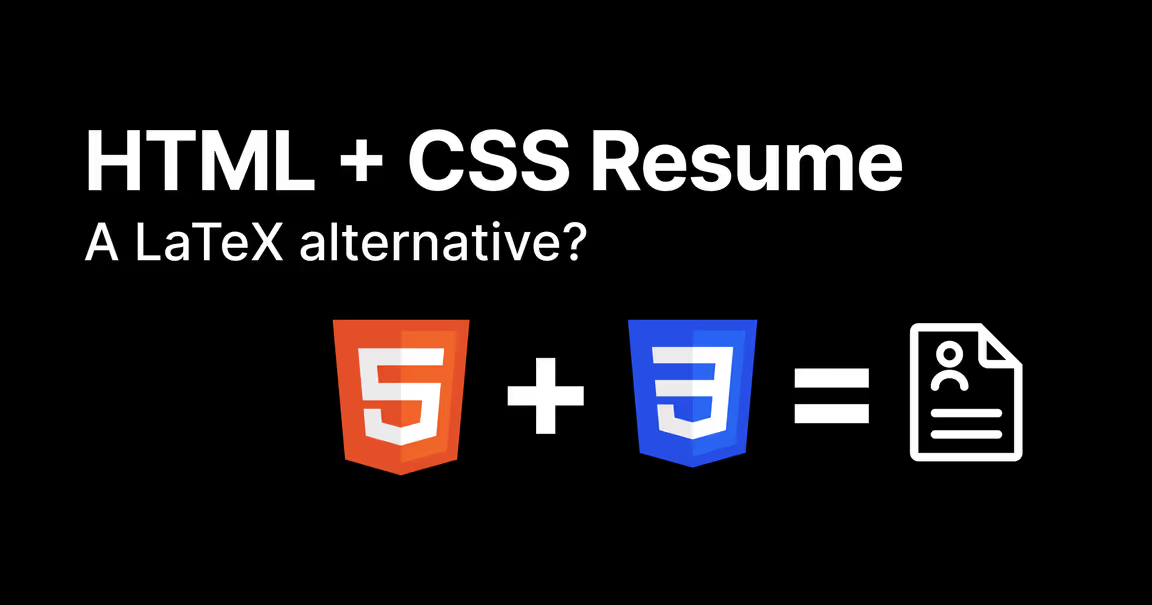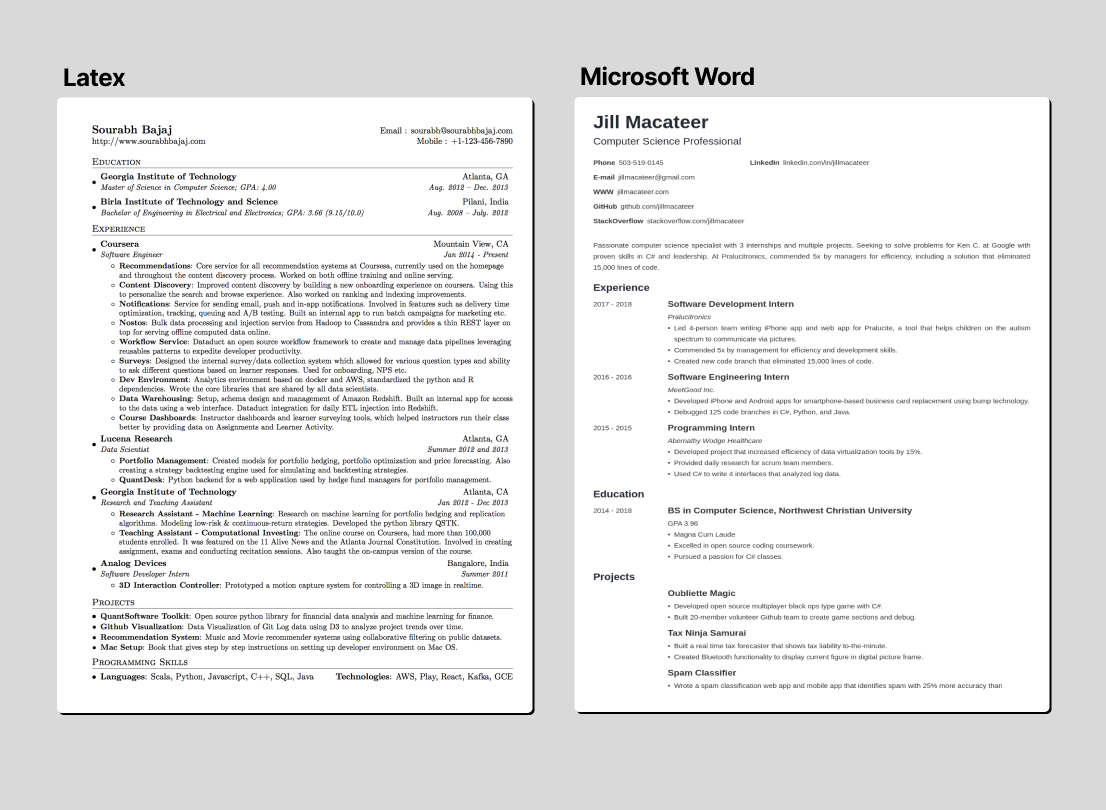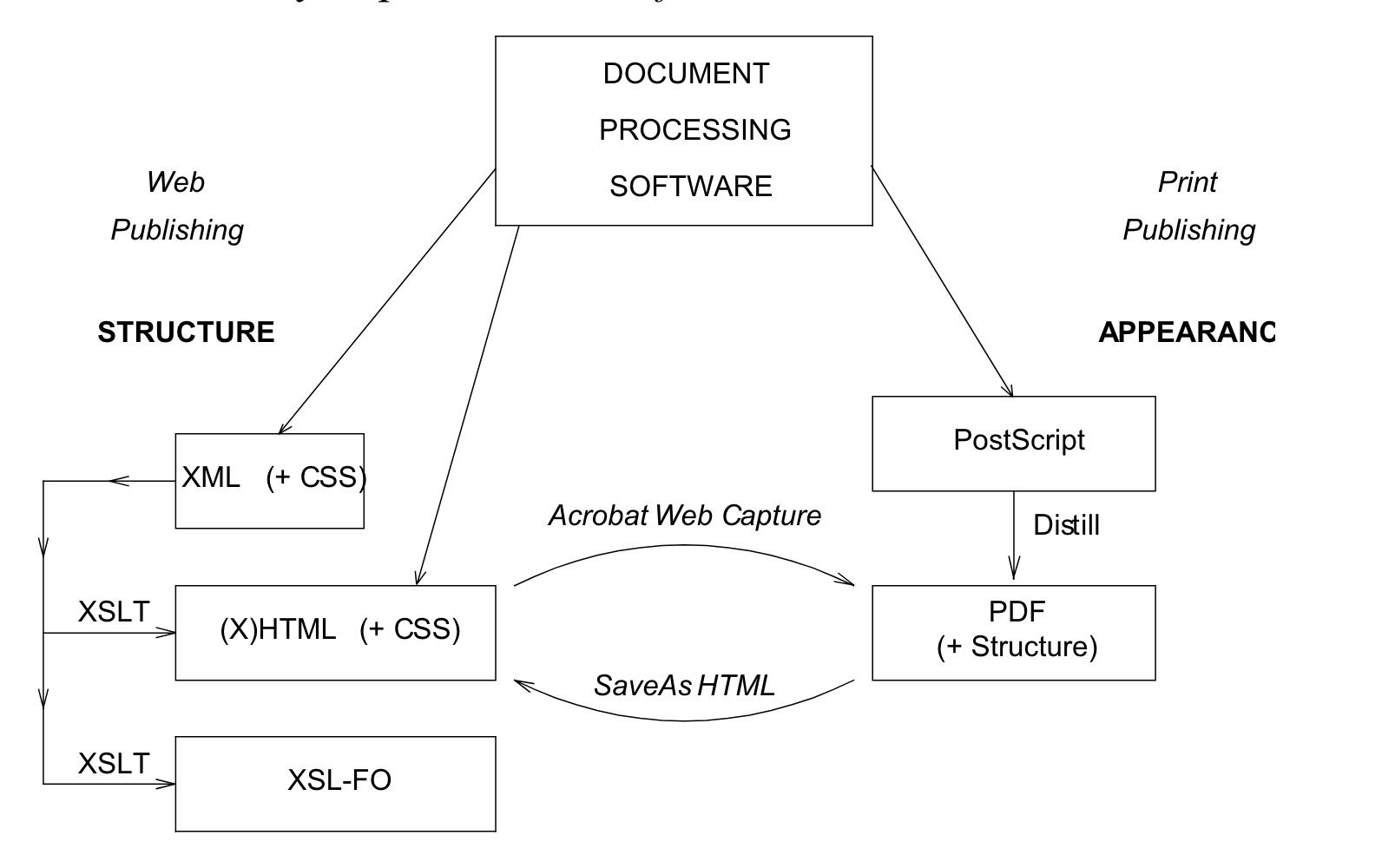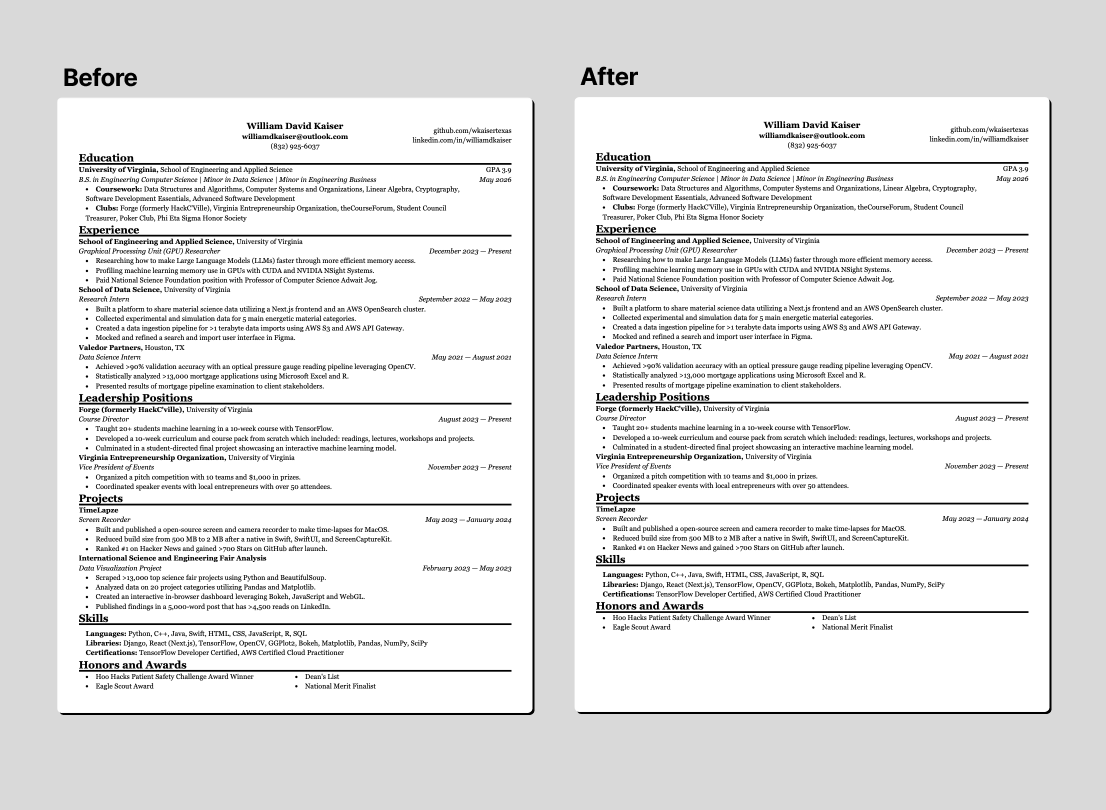Why I use HTML to make my resume instead of LaTeX or Microsoft Word
Published
How HTML and CSS can form the best of both worlds between typeset languages like LaTeX and machine-parsable formats like Microsoft Word.

My ex-meta now quant friend game me some advice on resume formatting after going deep on applicant tracking systems. Their advice? Use HTML and CSS to make your resume.
To emphasize how deep the aforementioned individual went down the ATS rabbit hole, they left the following advice:
<style>
/* we set text-rendering to optimizeSpeed not
* save speed, but rather to disable ligatures
* or multi-character groups which some parsers
* are unable to handle
*/
body {
text-rendering: optimizeSpeed;
}
</style>Ligatures are features of some fonts where two or more characters (like fi or fl) are combined into a single glyph. Setting text-rendering to optimizeSpeed, has the rather useful side-effect of disabling these.
Your Resume: a Machine-Parsable Document in the 21st Century
Conflicting advice is everywhere about resume formatting. Job-hunting on “gurus” on the internet love to mention how ATS parsability is a requirement of all good resume templates. Applicant Tracking Systems or ATSs are the systems institutions use to keep track of applicants from submitting a resume, automatically filtering out candidates and spam, conducting interviews and submitting offers.
There are two main concerns with Applicant Tracking Systems as a job candidate:
- Many recruiters will opt-out of reading the PDF of your resume. Instead, reading the machine-parsed version through the ATS system.1
- You may be automatically filtered out by a Applicant Tracking System. The ATS will parse your resume, extract the sections and use natural language processing to give companies a shortlist of candidates. In fact, some report will indicate that up to 75% of resumes get auto-rejected by ATS systems2
Both use cases require accurate resume parsing by computer vision models to extract the key sections of your resume. This is why ATS parsability is important. But first, some resume formatting ground rules.
Resume Basics: The Undisputed Rules
The debate on which resume template is best is out of scope for this post. However, there are a few unequivocal rules will be treated as assumptions going forward. This is general advice which applies to most fields (note: advice can be ignored — however, you are not the exception).
- Use
.pdfas your resume format. PDFs ensure visual consistency and ease-of-access. - Use a boring resume template. Your resume should be black and white. Showcase yourself through your skills and experience, not your styling.
With these out of the way, let’s dive into the two current modalities for technology-focused resumes: LaTeX and Microsoft Word.
LaTeX vs Microsoft Word
Many programmers will make a LaTeX resume. LaTeX is a typeset language or code which describes your document’s style and structure. When the resume is written, it is “compiled” into a PDF or any export format required. Typesetting is in contrast to software like Microsoft Word where you preview a document while editing. Ease-of-use means typesetting is avoided for most people.
\resumeSubItem{
Menu Bar TimeLapse
}{
Programmed a Mac OS app to take screen timelapses using Python and OpenCV.
Rebuilt in Swift to increase portability and fix color-space compression issues.
}Both LaTeX and Microsoft Word can produce great resumes. Some popular templates (especially the LaTeX one) are shown.

Despite being visually appealing, LaTeX and Microsoft Word can create problems with ATS parsers. Both programs sacrifice parsability for visual appeal.
Mangled PDFs - Problems with Both Approaches
Both LaTeX and Microsoft Word will mangle documents when converting to a PDF file format. LaTeX is the worst offender, often placing line breaks, page breaks and other formatting issues in the wrong place. Microsoft Word is better, but still have issues with text rendering and spacing.
For an intuition on why this is a problem, let’s look a bit closer at a PDF file. In effect, a PDF is a XML-based file format which describes both the document’s structure and style. When a PDF is created, both LaTeX and Microsoft Word require a conversion process between fundamentally different file formats. While both LaTeX and Word are good, the conversion process is optimized for visual appeal and not ATS parsability.
However, there is a third way — one far closer to PDFs than LaTeX or Microsoft Word allowing for near-perfect ATS parsability.
HTML + CSS: A new challenger approaches
Hyper-Text Markup Language (HTML) and Cascading Style Sheets (CSS) power the web. These provide the structure and styling of pages, respectively. In effect, HTML describes a page’s contents and CSS makes it look nice.
However, HTML can provide both the benefits of typeset languages and be more ATS parsable thanks to the close file structure and limited managing performed by Google Chrome’s Print to PDF feature. In fact, the transformation is so simple that it is explicitly considered in design documents.

HTML to PDF transformation is a well-documented process
For more information on the tranasformation between HTML and PDF documents, see Mapping and Displaying Structural Transformations Between XML and PDF.
Why is a typeset language so nice?
As a practical example, a common criticism I will get of my resume is that it reads too data-sciency. Because I have built a couple of data-science projects over the years. Specifically, a lengthy post I wrote on the International Science and Engineering Fair (ISEF).
For my ISEF analysis, I wrote the following blurb on my resume:
<div id="isef-analysis">
<div class="flex flex-row justify-between items-end">
<div>
<h3>
<strong>International Science and Engineering Fair Analysis</strong>
</h3>
<p class="italic">Data Visualization Project</p>
</div>
<div>
<p class="italic">February 2023 — May 2023</p>
</div>
</div>
<ul class="list-disc list-inside px-4">
<li>
Scraped >13,000 top science fair projects using Python and BeautifulSoup.
</li>
<li>
Analyzed data on 20 project categories utilizing Pandas and Matplotlib.
</li>
<li>
Created an interactive in-browser dashboard leveraging Bokeh, JavaScript
and WebGL.
</li>
<li>
Published findings in a 5,000-word post that has >4,500 reads on LinkedIn.
</li>
</ul>
</div>If I want to hide this section and show another block, I can open my resume in Visual Studio Code, select the range I want and press ⌘ + k, I can comment or uncomment this section with ease.

Commenting out a section in VS Code Makes Editing Easier
With typesetting, tailoring a resume for the role I am applying is easy. Moving around sections, adding new projects and changing the order of my experience does not require a complete rewriter.
As a programmer, I like the fact that I can use git to keep track of changes to my resume. No more resume_v1.docx, resume_v2.docx, resume_v3.docx files! Having a version control system for my resume is a game-changer.
All in all, this approach gives me flexibility in my resume. I can make it data-sciency or quant-y or whatever I want.
Are the benefits to a HTML resume worth it?
Despite the benefits of HTML and CSS for resume parsability, it likely will not move the needle on your job search.
Using HTML and CSS to create your resume can improve ATS performance. However, it is not a silver bullet. Dialing in your resume’s ATS performance takes time and testing. I would recommend resources like Jobscan to validate your template.
Because of the work creating your own resume in HTML takes, it probably will not be worth the time. Getting better skills, experience, projects, networking and applying to more jobs will be more effective than minor ATS optimizations. I made my resume in HTML and CSS because I was stuck on a train from New York for 8 hours and wanted a project.
Overall, this method is a good antidote to LaTeX for those who enjoy a typeset resume — without the ATS penalty.
If you want my HTML resume template, you may checkout out the webpage I made for it. It is very simple and boring, but that is the point.
Have a great day! And I wish you the best of luck in your job search. 🤞
Footnotes
-
Recruiters will often prefer the standardized interface the ATS software gives over PDFs. ↩
-
As a caveat, some recruiters have called into question this statistic. The claims being made about applicant tracking systems stem from research done in 2012-2014. Without a doubt, applicant tracking systems have evolved. However, recruiters are correct in their main claim that optimizing ATS parsability should be one of the last things done. ↩
Binary to Hex conversions to practice game
Great Resources
Stay in touch
Subscribe to my RSS feed to stay updated
Have any questions
Feel free to contact me! I will answer any and all inquires